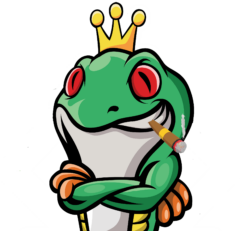This simple winterization method ensures your outboard engine is ready to handle Oklahoma’s winter temperatures. Regular maintenance and proper storage will extend the life of your engine.
Winterization Procedure for Outboard 4-Stroke/2-Stroke Engines in Oklahoma
This guide is tailored for mild winters in Oklahoma, focusing on fogging oil, stabilizer, and coolant freeze point testing. Antifreeze is optional for engines where water cannot be easily removed.
1. Gather Supplies
- Fogging oil
- Fuel stabilizer
- Coolant tester (if the engine has a closed cooling system)
- Antifreeze (only if necessary for water cavities)
- Garden hose and muffs (for water-cooled engines)
- Basic tools (if needed for flushing or inspection)
2. Prepare the Engine
- Flush the Cooling System:
- Attach muffs to the water intake ports.
- Connect a garden hose to the muffs and turn on the water.
- Start the engine and let it idle for 10–15 minutes to flush out any debris or salt.
- Ensure the water is flowing through the cooling system.
- Drain or Blow Out Water (if possible):
- Once flushing is complete, tilt the engine to the full down position to drain the water from the cooling system.
- If draining isn’t sufficient, use compressed air to blow out any remaining water.
3. Add Fuel Stabilizer
- Mix Stabilizer into Fuel:
- Add the recommended amount of fuel stabilizer to the fuel tank (refer to the product instructions).
- Run the engine for 5–10 minutes to circulate the stabilized fuel through the entire fuel system.
4. Fog the Engine
- Apply Fogging Oil:
- With the engine running at idle speed, spray fogging oil directly into the water intake if it will not run in water for more than 3-6 months [depending on climate], then into the air intake for the engine.
- Continue spraying until the engine starts to smoke heavily or stalls.
- If the engine does not stall, turn it off manually after applying the oil.
- Inspect Spark Plugs:
- Optionally, remove the spark plugs and spray fogging oil into each cylinder.
- Pull the starter cord or rotate the engine manually a few times to coat the cylinder walls.
- Reinstall the spark plugs.
5. Test the Coolant (Closed Cooling Systems Only)
- Check Freeze Protection:
- Use a coolant tester to check the freeze point of the coolant in the closed cooling system.
- Ensure the freeze point is appropriate for Oklahoma winter temperatures.
- Replace or adjust the coolant mixture if necessary.
6. Use Antifreeze (If Applicable)
- For Engines That Retain Water:
- If the water cannot be fully drained or blown out, flush the cooling system with marine-grade antifreeze.
- Pour antifreeze into the water intake or use a pump to circulate it through the engine until it exits the exhaust ports.
7. Final Steps
- Inspect and Secure:
- Inspect the engine for any visible issues or loose connections.
- Tilt the engine up to prevent water from entering the exhaust ports or lower unit.
- Cover the Engine:
- Use a breathable engine cover to protect it from dust, moisture, and pests.
- Store Properly:
- Store the boat in a dry, well-ventilated area or under a covered structure.
- Ensure the battery is disconnected and stored in a safe location if not used during the winter.
Important to note: Water Pump Impeller Should Be Replaced as Needed: If you’re unsure about the impeller’s condition, it’s better to replace it than risk overheating or cooling system failure.

Leave a Reply